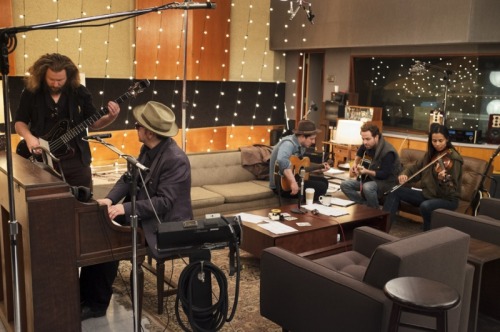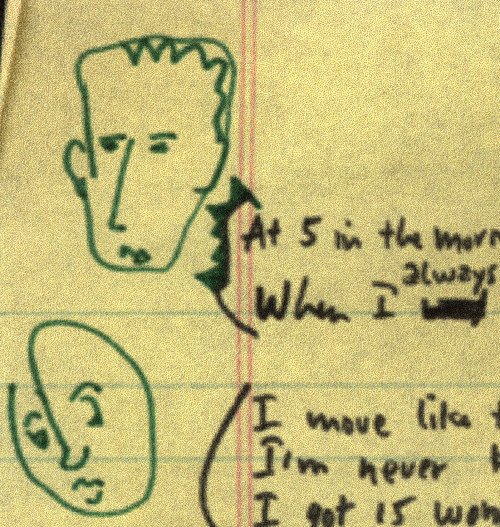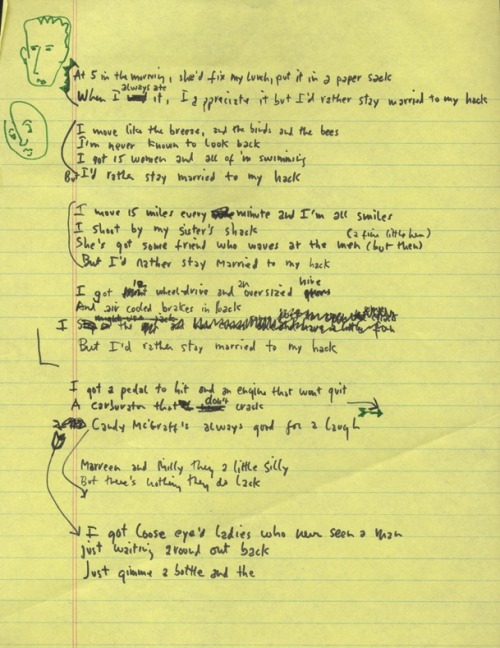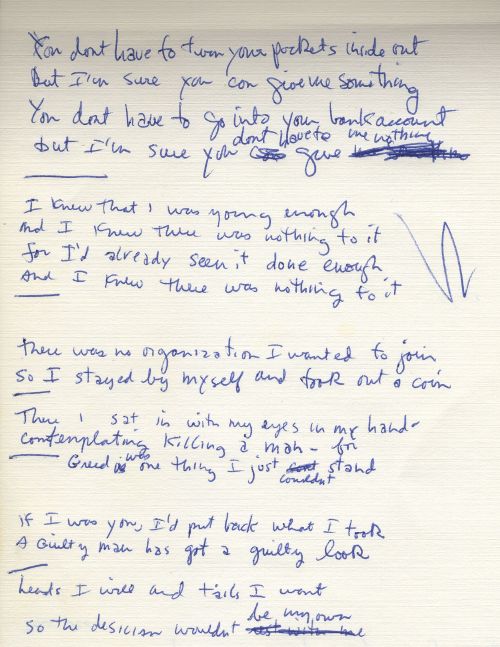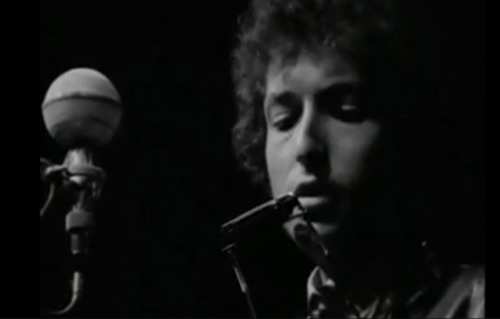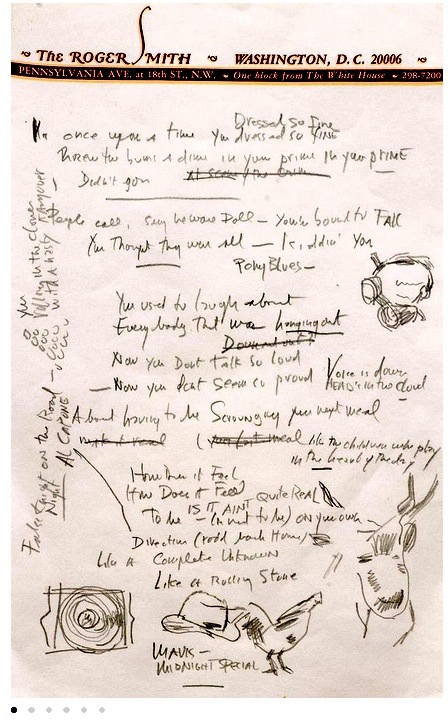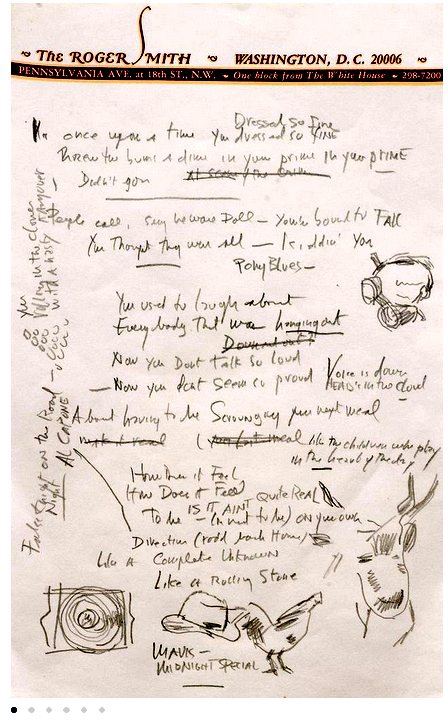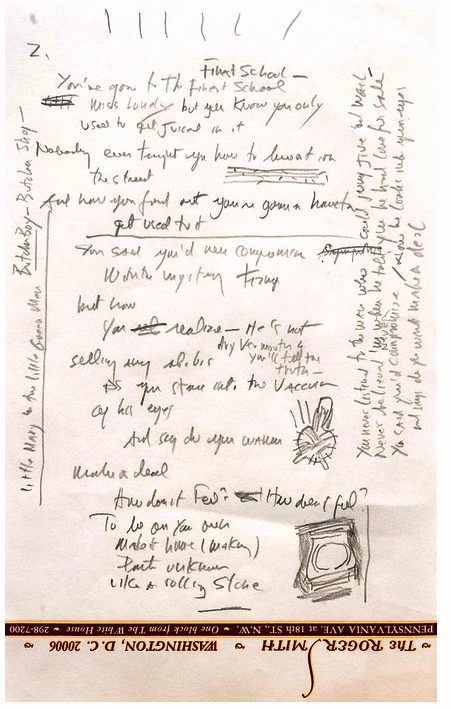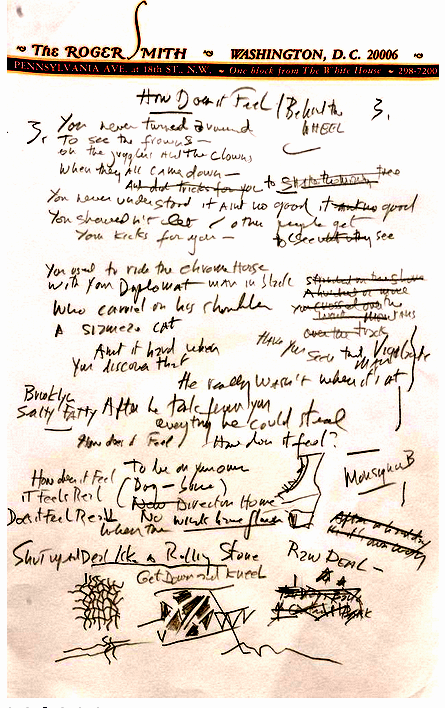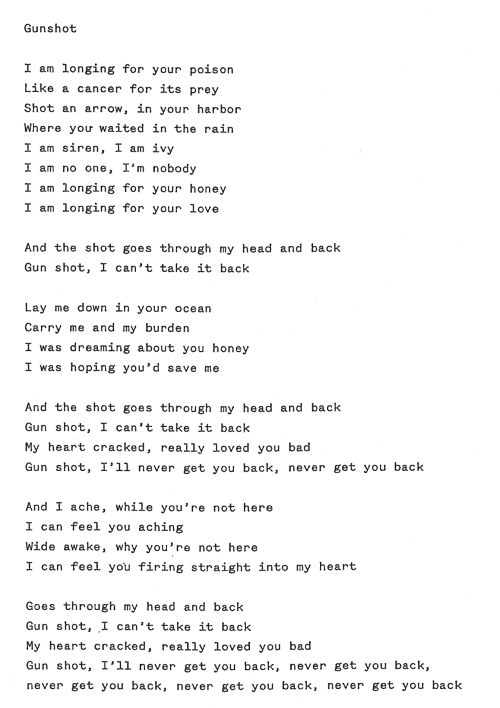
Yesterday I got access to a copy of Bob Dylan’s two pages of handwritten lyrics for “Liberty Street,” a song completed by Taylor Goldsmith of the band Dawes for the album Lost On the River: The New Basement Tapes (produced by T Bone Burnett).
I like what Dawes has done with the song, creating a piano ballad along the lines of “Dear Landlord.” Dawes’ voice is too smooth for me, and I’d love to hear Dylan sing this one (and bring his distinctive, bluesy approach to the piano part).
Dawes took quite a few liberties with Dylan’s words, only using a portion of the original lyrics, and by leaving out some key lines, turns it into a very different song, which is fine. I’m sure Dylan would dig that. Still, it’s worth noting a few of the missing lines. Dawes used some lines from these verses, as you’ll see:
In one verse, Dylan writes:
“6 months in Kansas City, can’t find no room and board,
6 months in Kansas City, what can’t lead to what kind of reward,
All my friends in jail lost out,
Some who ain’t got no bail bust out, but then find the tracks did make you come back,
Down on your knees, ain’t it a pity, not even a breeze,
6 months in Kansas City, make a man ready to do anything.”
And the one that follows:
“6 months in Kansas City! Woe! Can’t be begging for no last meal,
Things sure don’t look too pretty! Cause a man to rob and steal
All my friends confounded, indeed
Some lost and some drown and some turn to greed.”
Elvis Costello also took a shot at this one, and I do prefer his version, which he calls “Six Months In Kansas City (Liberty Street),” but that may be because I’m a big Elvis fan. Soon enough you’ll be able to decide for yourself, as the album will be out on November 10.
Goldsmith starts the song with Dylan’s second line, “He came from the old religion, but possessed no magic skill, Descending from machinery, he left nothing in his will.”
He also uses Dylan’s next two lines — “The crops are failing, the women wailing” — before rewriting Dylan’s first line — “I see by the papers that” — to complete the verse with “it’s in the paper at your feet.”
Although Dylan wrote a couple of possible choruses, Goldsmith made his own using Dylan’s title for the song which appears to have been “Liberty Street (Six Months In Kansas City).”
Goldsmith’s chorus: “Six months in Kansas City, down on Liberty Street.”
The strangest thing Goldsmith does is leave out what to me is a really key pair of lines: “Thank you for not helping me out, for not treating me like a fool.”
Instead, for his next verse Goldsmith jumps to the bottom of the first page and slightly changes Dylan’s lyric to: “It was sad to see it, that little lady goin’ in, arrested for arson, once they’d asked her where she’d been.”
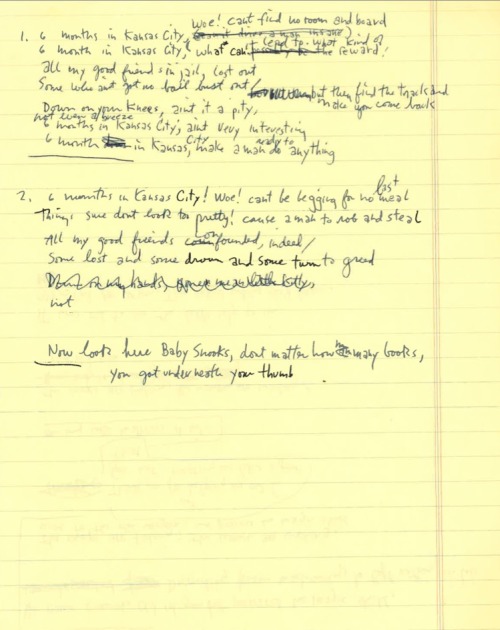
Then he grabs a line from later in the song — “Down on your knees, ain’t it a pity, not even a breeze — and turns it into: “Down on her knees, not even a breeze, another victim of the heat.”
And back to the chorus: “Six months in Kansas City, down on Liberty Street.”
For his final verse, Goldsmith goes to Dylan’s final verse for the lines “Things sure don’t look too pretty, cause a man to rob and steal, I got [unintelligible word] six more months out here, can’t be begging for my meals.”
And turns some lines from the first page — “Now look here Baby Snooks, don’t matter how many books, you got underneath your thumb” — into “Now look here Baby Snooks, doesn’t matter what books, you got underneath your seat,” before ending with “Six months in Kansas City, down on Liberty Street.”
About the song, Goldsmith says in a press release:
“Liberty Street” was one of the last songs I put together for the record. We didn’t see the lyrics for this song until we got into the studio. Bob Dylan has a way of saying lines like ‘Six months in Kansas City down on Liberty Street’ and it having an immediate, yet sometimes ineffable, power. When I started putting these words to music, the structure of the words dictated the way the chords rolled out so it came together really fast. And the recording of it was our first take.”
“Liberty Street”:
—
[I just published my rock ‘n’ roll novel, True Love Scars.” Rolling Stone has a great review of my book in the new issue. Read it here. There’s info about True Love Scars here.]
— A Days Of The Crazy-Wild blog post —


